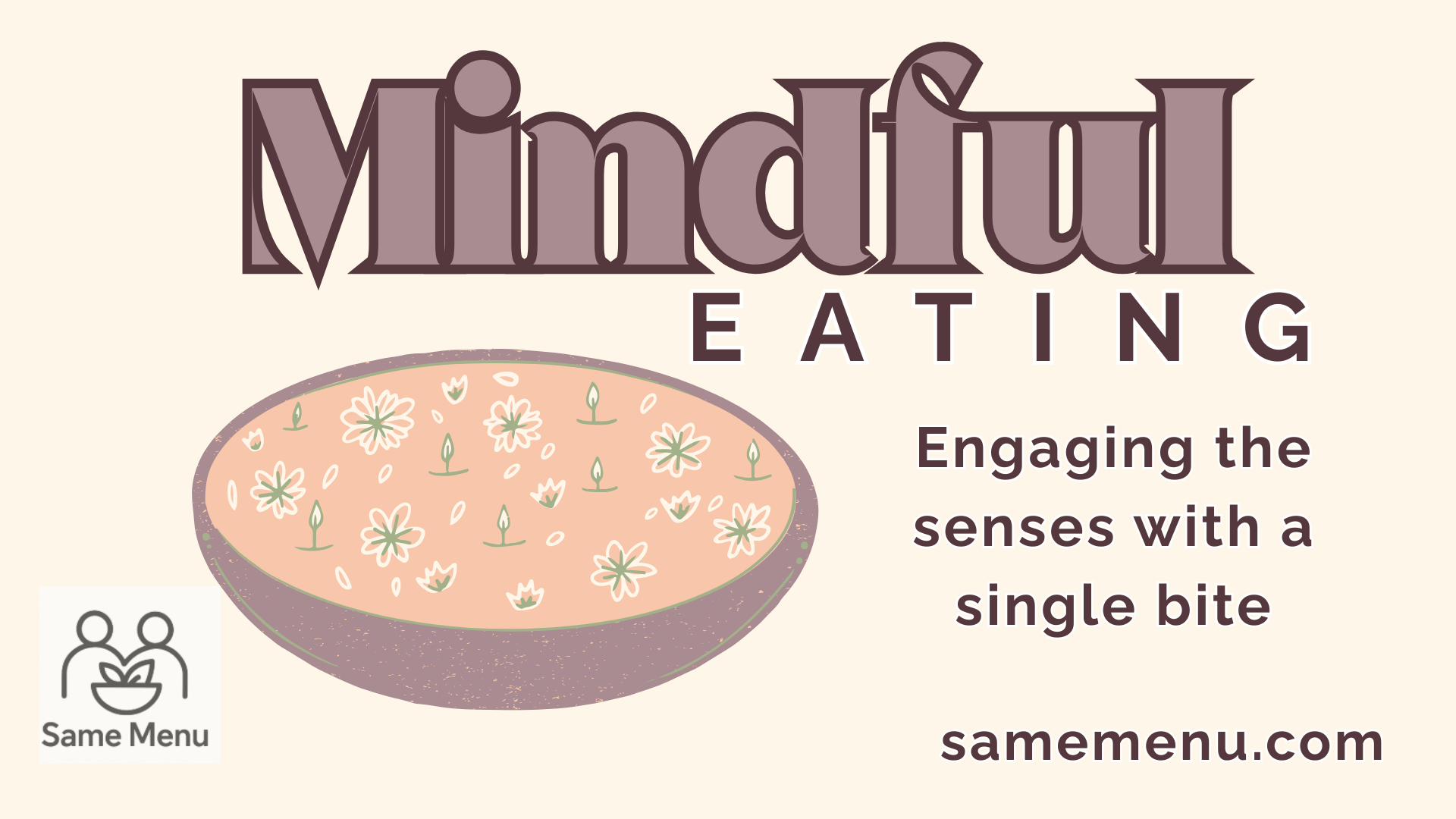Engaging the Senses with a Single Bite
Mindful eating is a powerful tool, especially when navigating dysphagia. It helps build awareness of the swallowing process, reduces anxiety around meals, and strengthens the mind-muscle connection. This guided activity will help you focus on the sensory experience of eating, using a single small bite of a safe texture food.
Choosing Your Food
Please choose one of the following options that corresponds with your confident diet texture. (If you haven’t yet been assessed or suspect a change, you can use the safe texture finder to determine where you stand in this moment) Select a bite of food from that texture that feels safest the most consistently for you.
For Pureed (Level PU4): A small spoonful of a smooth puree (applesauce, Greek yogurt). It should be uniform texture and it should be a scoop that you’d be able to pick up with a fork.
For Minced and Moist (Level MM5): A small moist spoonful of minced banana, avocado (pieces should be smaller than 4mm, no extra liquids, skins peeled).
For Soft and Bite Sized (Level SB6): A 15mm piece of a tender fruit, peeled and pitted as needed, like a soft peach.
For Easy to Chew (Level EC7): A small piece of soft food you enjoy such as a smooth cheese or peeled and deseeded tender produce.
After you select and prepare your bite, find a quiet space with a notepad and pen, where you can focus fully on this moment. Sit comfortably and take a few deep breaths before you begin. Aim to make the exhale twice as long as the inhale (in for 4, out for 8 sec) to send signals to your body its safe to relax.
Step One: Observing the Bite
Before placing the food in your mouth, simply look at it.
-Notice its shape, size, and color.
-How does the light reflect on its surface?
-List 3 adjectives to describe the visual texture
Now bring it closer to your nose and take a gentle inhale.
-What does it smell like?
-Is the scent subtle or strong?
-Does it trigger any memories or expectations about taste?
Step Two: Feeling the Texture
Gently press the food between your fingers or tongue.
-How does it feel? Smooth, firm, yielding?
-Does it change shape easily or hold its form?
-If using a puree or mince, how does the spoon feel as it moves through?
Step Three: Bringing Awareness to the Mouth
Place the bite in your mouth, but don’t chew or swallow immediately.
-How does it feel on your tongue?
-Can you notice your salivary glands responding?
-Is the flavor immediately strong, or does it build?
Slowly begin to move the food around your mouth, taking your first couple of bites, noticing how your tongue and facial muscles engage.
-If chewing is required, how the texture change over that time?
-If its a puree, how does it spread across your tongue?
-Pay attention to how your body might start making plans for a swallow; is there a moment where you naturally feel ready?
Step Four: The Swallow
Continue to slowly chew the food, feeling the changes in pressure, possible temperature. Once you have finished chewing, swallow the bite.
-Do you notice the pull of the airway moving up and forward, protecting your lungs?
-How does your body know the swallow is complete?
Take a moment to breathe.
-Do you feel any changes in the speed or the quality of your breathing?
-Do you feel the need to swallow again? If so, go ahead.
Step Five: Reflection
This practice is not about “getting it right.” It’s about building awareness of your own swallowing process; understanding it, not fearing it.
Did you notice anything new about how you eat?
Were there moments in which you were feeling tension and anxiety, even with your safest texture? These are areas to share with your care team for creating strategies that support you through this phase.
When did you feel most in control of the eating experience? These are areas that you can lean into. For example, if you don’t ever feel fatigue with the chewing, you can chew your bites more finely for easier to swallow bite sizes.
Why Mindful Eating Matters While Managing Dysphagia
For some people, fear of swallowing (phagophobia) can increase muscle tension, making eating feel even harder. This meditation is a tool to slow down, tune in, and rebuild confidence in your ability to eat safely.
If you struggle with anxiety around swallowing, try this meditation at the beginning of meals with a familiar, safe food. If you are working with an SLP or therapist, share any insights or difficulties you noticed, they’ll help adjust strategies to make eating easier. If certain textures or sensations trigger discomfort, explore which parts of the process feel manageable and where support might be needed.
Bringing awareness to something automatic, like swallowing, can feel strange at first, but the more you practice, the more you will understand your own body’s cues. Each mindful bite is an opportunity to build trust in your ability to nourish yourself, safely and comfortably.
Keep Reading
Has your swallowing recently changed? Understand the process and how to manage your meals safely. And check out the growing collection of easier to chew and swallow recipes.
Every recipe here is designed for texture sensitive eaters: from dysphagia to dental issues to picky eaters. Get recipe roundups and practical tips by joining the mailing list.

Leave a Reply